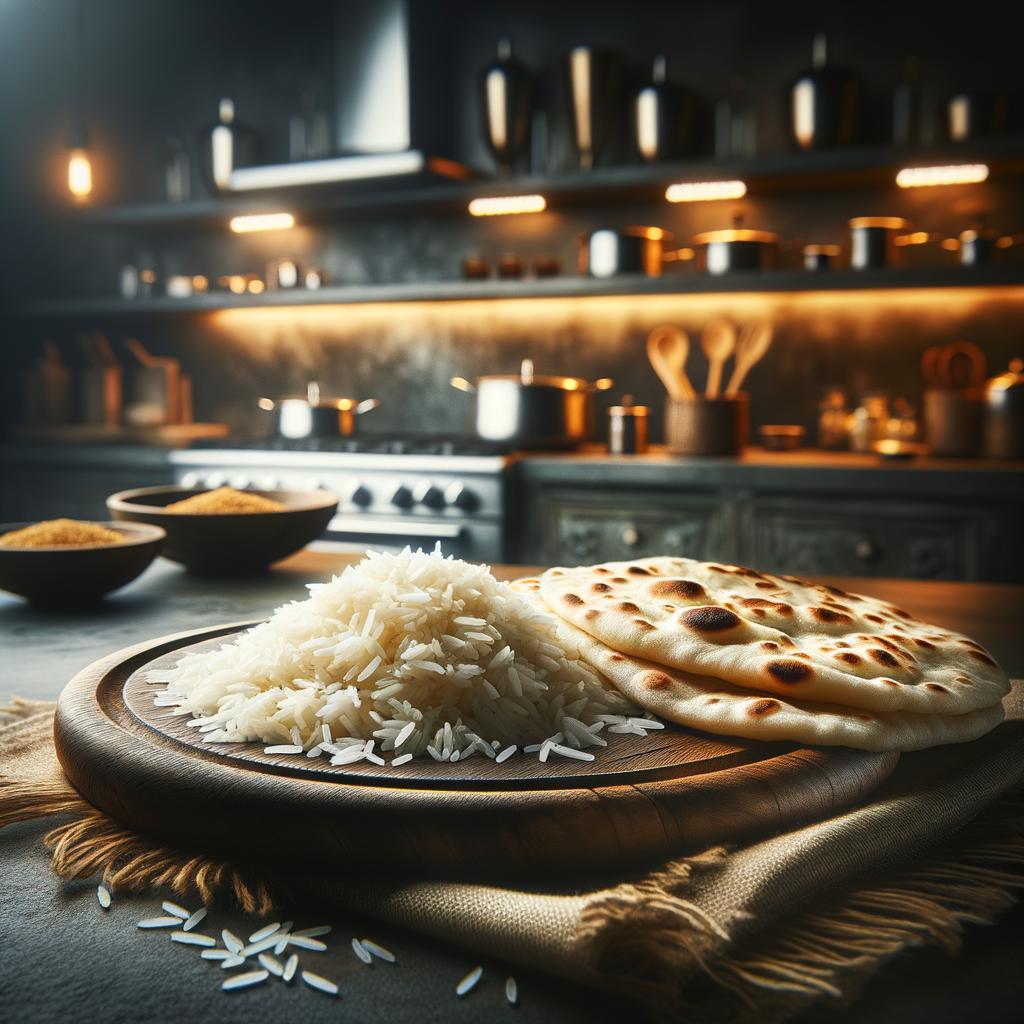Cooked Rice or Naan Bread

Cooked Rice
Description
Cooked rice, a staple food for more than half of the world's population, is an ingredient that's as humble as it is versatile. The grains themselves are small, plump, and tender, with a slightly glossy sheen. The texture of cooked rice can vary from sticky to fluffy, depending on the variety and cooking method. Its flavor profile is subtly sweet and nutty, providing a neutral canvas that beautifully absorbs and complements other flavors. What sets rice apart from similar grains is its incredible diversity - with over 40,000 varieties, each with its unique characteristics.
Primary Uses
Rice is a chameleon in the kitchen, adapting to a myriad of culinary applications across different cultures. It forms the bedrock of dishes like sushi in Japan, paella in Spain, jollof rice in West Africa, biryani in India, and risotto in Italy. Beyond the culinary world, rice has also found uses in brewing sake and making rice paper and rice milk. In some cultures, rice is associated with prosperity and life, often used in rituals and celebrations.
History
The story of rice is as old as civilization itself, with its cultivation dating back to 5000 BC in China. It spread across Asia and the Middle East, eventually reaching Europe and the Americas. Over time, rice has woven itself into many cultural narratives. In ancient Japan, it was believed that the rice plant housed a deity. In India, it's often the first solid food a baby eats, symbolizing a life of prosperity and well-being.
Nutritional Information
Rice is an excellent source of energy, providing complex carbohydrates. It's low in fat and, in the case of brown rice, is a good source of dietary fiber. It also contains essential minerals like manganese, selenium, and phosphorus. Compared to other grains like wheat, rice is easier to digest and is less allergenic. However, moderation is key as excessive consumption, especially of white rice, can lead to weight gain and a higher risk of diabetes.
Naan Bread
Description
Naan bread, a type of Indian leavened bread, is beloved for its soft, chewy texture and distinctive charred flavor. It's typically teardrop-shaped with a surface that's speckled with golden-brown spots from intense heat cooking. The interior is fluffy and slightly elastic, while the flavor is mildly tangy due to the use of yogurt in the dough. Unlike other flatbreads, naan is characterized by its unique cooking method - it's traditionally slapped onto the side of a tandoor, an Indian clay oven.
Primary Uses
Naan bread is a versatile ingredient that can be used in a variety of ways. It's traditionally served with Indian curries, used to scoop up the sauce, or filled with ingredients like spiced potatoes or meat for a quick meal. It's also delicious when brushed with ghee (clarified butter) and sprinkled with fresh herbs or garlic. Outside of the culinary realm, naan bread holds a special place in Indian celebrations and ceremonies.
History
The history of naan bread is as rich as its flavor. It dates back to 1300 AD in the Indian subcontinent, with the earliest mention in the notes of the Indo-Persian poet Amir Kushrau. The bread was a delicacy and was often served in the royal courts. Over time, naan has become a staple in South Asian cuisines and has spread across the world.
Nutritional Information
Naan bread is a good source of energy, providing carbohydrates and protein. It also contains trace amounts of minerals such as iron, magnesium, and zinc. However, naan bread can be high in calories and sodium, especially when brushed with ghee or butter. Compared to whole grain bread, naan has a higher glycemic index, which means it can cause a quick spike in blood sugar levels. Therefore, it should be enjoyed in moderation, especially by those monitoring their blood sugar or caloric intake.

